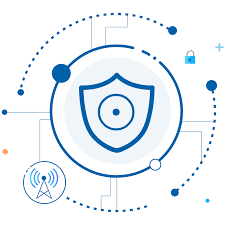5G Security Standards: Ensuring a Safe and Resilient Network
The advent of 5G technology has revolutionized global communication, enabling lightning-fast speeds, reduced latency, and massive connectivity. However, this leap forward comes with heightened security risks, necessitating robust 5G security standards to safeguard networks, devices, and users. Let's explore what makes 5G security crucial and the frameworks ensuring its resilience.
The Need for Strong 5G Security Standards
With 5G's integration across industries—ranging from healthcare and transportation to smart cities and IoT—its vulnerabilities pose significant threats. Cyberattacks on 5G networks could disrupt critical services, compromise sensitive data, and create national security risks.
Key challenges include:
- Expanded Attack Surface: Increased device connectivity widens entry points for attackers.
- Complex Architecture: 5G's reliance on software-defined networking (SDN) and network slicing introduces new vulnerabilities.
- Interoperability: Integrating with legacy systems, such as 4G LTE, exposes potential security gaps.
Global Standards for 5G Security
To address these concerns, global organizations have established comprehensive security frameworks. These standards ensure uniformity, transparency, and best practices in 5G deployment.
1. 3GPP Security Framework
The Third Generation Partnership Project (3GPP) is a leading body defining 5G security specifications, including:
- Authentication and Key Agreement (AKA): Ensures secure communication between devices and the network.
- Network Slicing Security: Provides isolation to prevent breaches from impacting other slices.
- User Privacy Protections: Safeguards user identity and data confidentiality.
2. NIST Guidelines
The National Institute of Standards and Technology (NIST) offers robust recommendations for securing 5G networks, including:
- Continuous risk assessments.
- Secure software and hardware integration.
- Threat detection and response protocols.
3. GSMA 5G Security Guidelines
The GSMA provides operator-focused guidelines emphasizing SS7, Diameter, and GTP protocol security. Their Network Equipment Security Assurance Scheme (NESAS) ensures vendor equipment meets stringent security criteria.
Key Components of 5G Security Standards
- Encryption: Advanced encryption algorithms secure data in transit and at rest.
- Zero Trust Architecture: Ensures that no entity is trusted by default, mitigating insider threats.
- AI-Powered Threat Detection: Uses machine learning to identify and respond to anomalies in real time.
- Endpoint Security: Protects connected devices from malware and unauthorized access.
5G Security in Action: Industry Applications
- Healthcare: Secure 5G networks protect patient data and ensure reliability for remote surgeries.
- Smart Cities: Prevents unauthorized access to critical infrastructure, such as traffic management systems.
- Autonomous Vehicles: Maintains safe communication between vehicles and road systems.
Future of 5G Security
As 5G evolves, so must its security protocols. Upcoming advancements include:
- Quantum-resistant encryption to counter quantum computing threats.
- Enhanced AI models for predictive threat analysis.
- Global collaboration to address cross-border security challenges.
Conclusion
Implementing stringent 5G security standards is essential to realizing the full potential of this transformative technology while mitigating risks. As industries and governments worldwide adopt 5G, adhering to these standards will ensure a safer, more resilient digital ecosystem.
Stay informed, stay secure, and embrace the future of connectivity with confidence.




Comments
Post a Comment